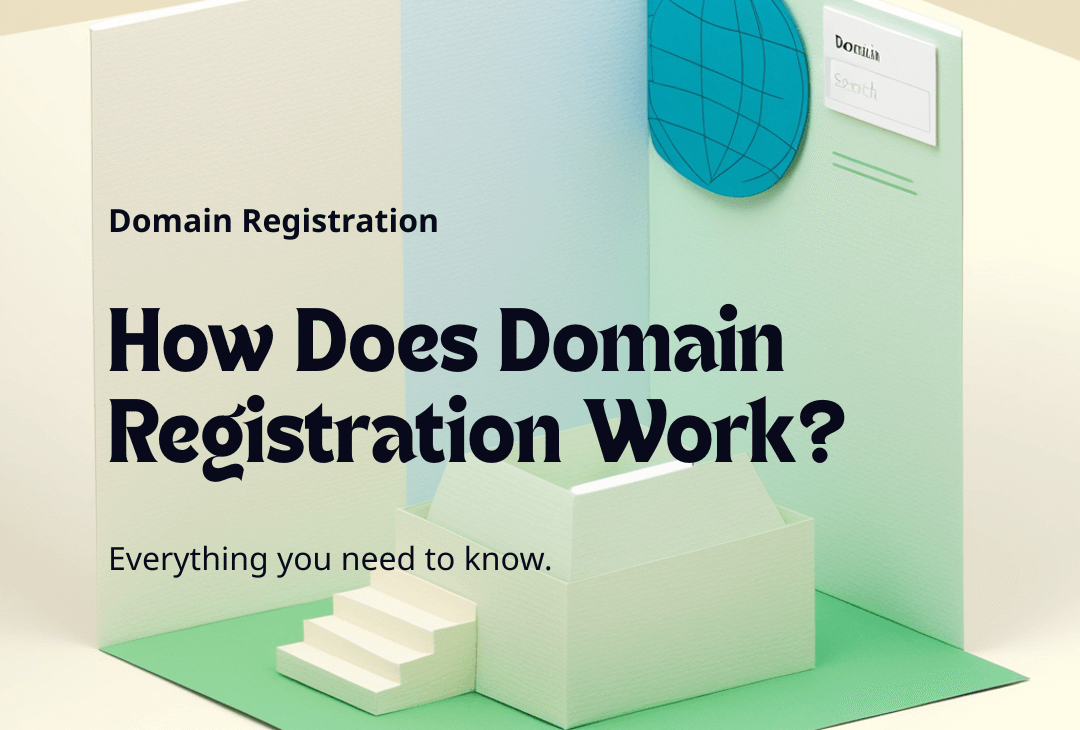Everything You Need to Know, from Buying to Changing Your Domain
Understanding how domain registration works is essential for anyone looking to establish their online presence. Domain registration is the process of securing a unique web address that connects your brand to the internet, involving registrars, registries, and global oversight organizations.
Whether you’re launching your first website or expanding your digital footprint, this comprehensive guide will walk you through everything you need to know about the domain registration process.
The Key Players in How Domain Registration Works

When you dive into how domain registration works, you’ll encounter four main players who make the entire system function smoothly:
- Registrant – That’s you, the person or organization who wants to claim ownership of a specific domain name. You’re the one with the vision and the wallet.
- Registrar – These are your gateway companies like GoDaddy, Namecheap, or Google Domains. They’re ICANN-accredited businesses that sell domain names directly to customers like you.
- Registry – Think of registries as the master database keepers. Companies like Verisign manage the .com registry, while others handle .org, .net, and country-specific domains.
- ICANN – The Internet Corporation for Assigned Names and Numbers serves as the global coordinator, setting policies and maintaining the stability of the domain name system worldwide
Step-by-Step: How Domain Registration Works in Practice
Let me walk you through exactly how domain registration works when you decide to claim your spot online:
- Search for Availability: Start by checking if your desired domain is available through any registrar’s search tool. The system queries the appropriate registry database in real-time.
- Choose Your Registration Terms: Most domains can be registered for 1-10 years. Consider starting with a longer term for brand protection strategies and potential cost savings.
- Provide Required Information: You’ll need to submit contact details including name, address, email, and phone number. This information becomes part of the public WHOIS database, though privacy protection services can shield your personal details.
- Complete the Transaction: Once you pay the registration fee, your registrar forwards your request to the appropriate registry, which then updates the global DNS system.
- Configure DNS Settings: Point your new domain to your web hosting service or set up email services. This is where your domain starts directing real traffic.
What Happens After Domain Registration
Understanding how domain registration works doesn’t stop at the purchase. Here’s what you need to know about managing your domain:
- DNS Management: Update nameservers, create subdomains, or redirect traffic as your needs evolve. Most registrars provide user-friendly control panels for these changes.
- Domain Transfers: You can move your domain between registrars while keeping the same expiration date. The process involves unlocking your domain and obtaining an authorization code.
- Renewals and Expirations: Domains are leased, not owned permanently. Set up automatic renewal systems to avoid losing your valuable web address.
Common Domain Registration Challenges and Solutions
Even when you understand how domain registration works, you might encounter these situations:
- Premium Domains: Some registrars charge higher fees for premium or previously owned domains. These often come with established SEO value but require larger investments.
- International Domains: Country-code top-level domains (ccTLDs) may have specific residency or business requirements. Research restrictions before committing to .uk, .ca, or similar extensions.
- Trademark Considerations: Always verify that your chosen domain doesn’t infringe on existing trademarks. The USPTO database can help you avoid legal complications.
The Technical Side: How Domain Registration Works Behind the Scenes
The magic of how domain registration works involves several technical processes:
When you register a domain, your registrar communicates with the registry through the Extensible Provisioning Protocol (EPP). The registry then updates the authoritative database and propagates changes across the global DNS network within 24-48 hours.
This distributed system ensures that when someone types your domain into their browser anywhere in the world, they reach your intended destination.
Making Your Domain Registration Decision
Now that you understand how domain registration works, focus on choosing a domain that reflects your brand, is easy to remember, and supports your long-term goals. Consider factors like extension popularity, typing ease, and potential for brand confusion.
Remember, your domain becomes a crucial part of your digital identity. Take time to research, plan your SEO strategy, and choose wisely.
The domain registration process might seem complex initially, but it’s designed to give you secure, reliable control over your corner of the internet. With the right preparation and understanding of how domain registration works, you’ll confidently navigate this essential first step toward online success.
Last modified: October 4, 2025




